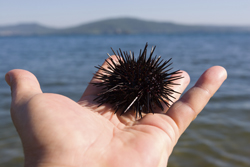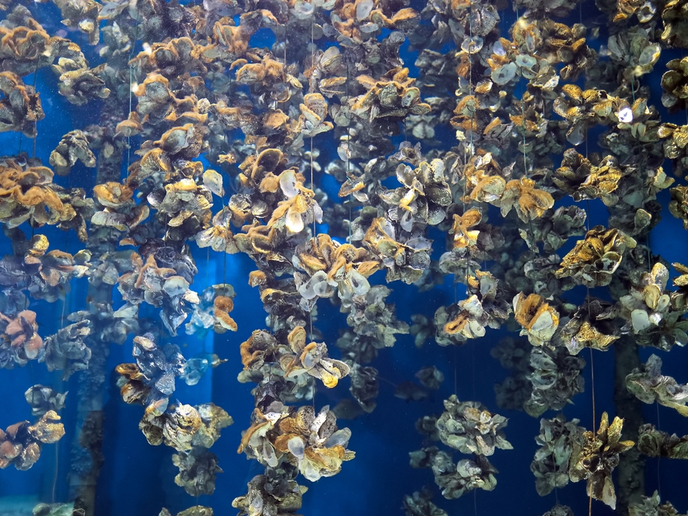Wild sea urchin rearing in aquaculture
Most wild populations of sea urchin are being overexploited and Paracentrotus lividus has now been included among the protected fauna species by the Council of Europe. Aquaculture of sea urchins are hampered as the taste of the roe is affected by the adults' diet. The aim of the 'Enrichement of aquaculture implants by introduction of new marine species from the wild to breeding' (ENRICH) project was to add urchins bred from wild stock to existing farms rearing sea bass, bream and/or various bivalves. Breeding started with adults obtained from the wild. Aiming for quality as close to wild sea urchins in colour, flavour, texture and firmness, the researchers manipulated urchin diet varying the type of oil supplied and amounts of protein and lipid. Interestingly, a home-made fresh diet of spinach, carrots and eggs combined with commercial pellets had optimal results at a temperature of 15–18 degrees Celsius. Overall, diet quality is linked to gonad development, size and sexual maturation. The complete life cycle of the sea urchin was examined and subjected to changes in feeding, rearing conditions and bedding conditions up to the adult stage. To test juvenile to adult growth, researchers set up three pilot-scale systems that were either land-based integrated systems or sea integrated systems. The trials encompassed a large range of environmental conditions, to test effect of feeding and culturing systems across a range of variables. Proposed treatment of effluent water illustrates the environmental thrust of ENRICH. Wastewater from super-intensive fish farms was channeled into an Ulva (sea lettuce) biofilter and production unit to be used as a food source for the sea urchins. This system has the dual advantage of 'cleaning' effluent waters from fish farming and feeding urchins a protein-enriched diet. Besides satisfying the palates of discerning sea urchin roe consumers, integrating sea urchin rearing into fish farming makes restocking a possibility for overexploited populations. Many small businesses stand to gain from a supply of broodstock and the use of protocols for optimising the different phases of sea urchin culture.







